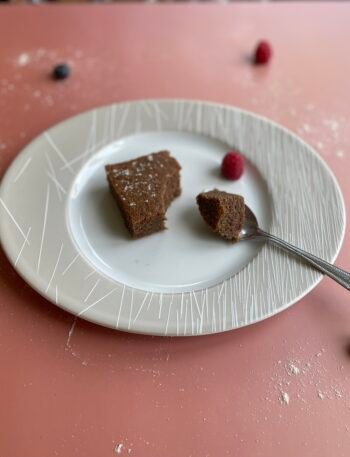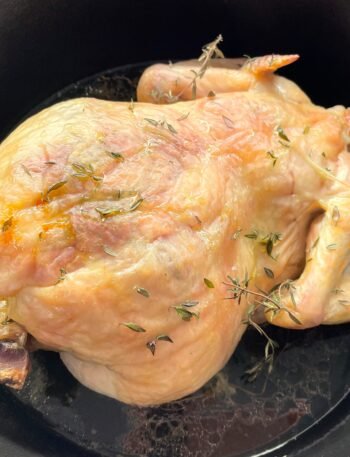
The title says it all. It’s a long story, but at some point in our lives, I had to cook everything but vegetables at 80°C maximum. And a brand new world opened ! Oh Gosh, the tenderness of every piece of meat, or fish, when cooked at low temperature…..it’s beyong comparison. And it’s effortless!
Tenderness and moisture
Imagine a pork tenderloin, which may be quite dry (even when perfectly cooked). Baked at 80°C (160°F), it will become a tender and melt-in-your-mouth piece of meat. Have you ever experimented a pork piece melting in your mouth ? Nope ? Then it’s time to try !
Have you ever eaten an overcooked and dry chicken breast ? Yes. Well, this won’t happen again with low temperature cooking 🙂
Christmas time, willing to serve a beef tenderloin? Low temperature cooking! A goose? Low temperature! A duck? Same! A turkey? Low temperature! Forget all the dry poultries you’ve eaten before – I don’t know for you, but I did have to eat quite a lot of these in my life 🙂
Guest-friendly
The second, but not least, advantage of low temperature cooking, is that you’ll never serve a dry meat when you have guests at home. With low temperature cooking, the meat can stay in the oven for 1h or more, when ready, without becoming dry. Which you can certainly not try with a 180°C (350°C) oven temperature 🙂 .
If you’re more into chicken, try my low-temperature roasted chicken. The breasts are moist and delicious, and the meat just falls from the bones.
Temperature control
If you don’t own any, invest a few dollars in a digital thermometer. One with a cable, because :
1) You can leave it in place while cooking = no need to watch your dish until the thermometer calls.
2) Every time you sting the meat to see the temperature, the juices get out. If you want to have a tender meat, you have to keep the juices inside. Therefore, stinging the meat only once, and leaving the needle in place, will prevent the juices from escaping, and the meat from drying.
Temperatures
- Pork: needs to be done, with an inside temperature of 68°C to 80°C, or it may contain harmful bacteria. It’s definitely more tender at 68°C and I’d not recommend going much higher.
- Chicken: same than pork, and inside temperature should be 74°C-76°C.
- Beef :
- rare: 45-50°C
- medium-rare: 50-55°C
- medium-well: 60°C
- well done: >60°C . Please note that well done means there is no more juice inside the meat, and it will be dry, even cooked at low temperature. Nothing can be done about that, and I don’t recommend it.
- Veal : serve between medium-rare 55°C, to medium-well 68°C. Well done is 75°C (same than beef, I don’t recommend 75°C).
- Lamb & duck :
- rare: 55°C
- medium-rare: 60°C
- medium-well: 68°C
- well done: 70-75°C – please note that well done results in a dry meat, even at low temperature – there is no more juice inside. Nothing can be done about that, and I don’t recommend it.
- Fishes :
Between 45°C (for pink salmon) to 54°C for almost all fishes.
Average durations and temperatures :
- beef tenderloin: 4h at 80°C (160°F)
- pork tenderloin: 2h30 to 3h depending on thickness, at 80°C (160°F).
- whole chicken: 3h30 at 130°C (260°F)
- lamb and duck: 80°C works well for individual pieces (like breasts), 130°C is better for a whole duck.
As a general rule, use 80°C for small pieces, and 130°C for large pieces and whole poultry.
Last tips
As a general rule, don’t sting meat when you cook it. It will lose its juices and gets drier. Use tongs if you need to turn it. No fork!
At low temperature, no need to touch or turn the meat (at all). Just leave it. Don’t open the oven either, you will lose heat, and it will take longer to cook.
Join Cooking Evolution community and get ready to immerse yourself in a culinary adventure like never before!




